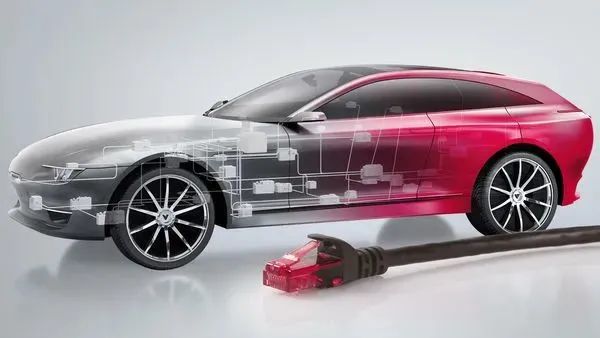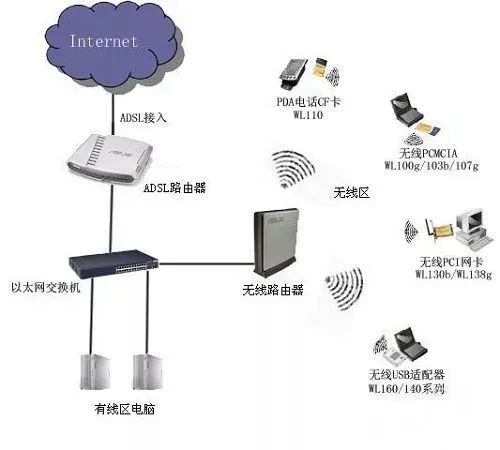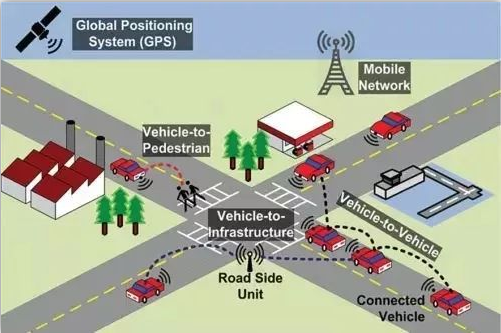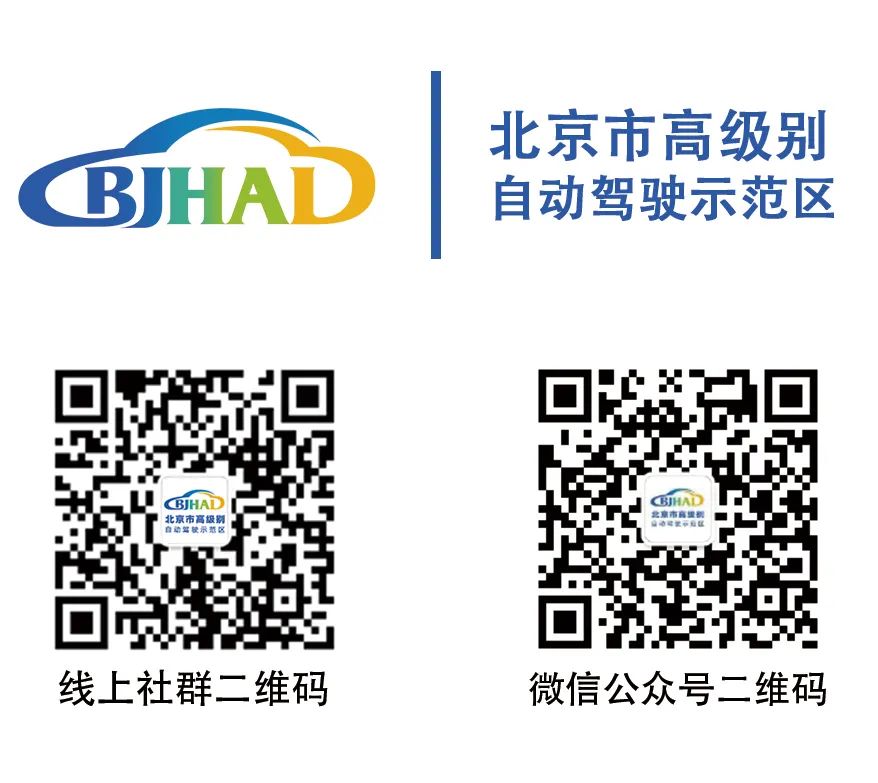This article mainly shares some popular science knowledge about automotive communication technologies, hoping to be helpful to everyone.
Bus Communication
Communication protocols connect various ECU nodes within the vehicle, forming a local area network inside the car. Nodes complete predetermined control functions and actions, such as motor start and stop, based on their own sensor information and the information on the bus. Communication between nodes is achieved through the bus. Each node generally consists of an MCU (or DSP, etc.), interface circuit, bus controller, bus driver, etc.
CAN
CAN (Controller Area Network) is a shared dual-wire serial communication bus developed by the German company BOSCH in 1983, with a maximum transmission rate of 1MBit/s. It features non-destructive arbitration, distributed real-time control, reliable error handling, and detection mechanisms. Moreover, the ISO standardization organization has standardized CAN communication, making the CAN network the backbone of in-vehicle communication. The advantages of the CAN network are low cost and high reliability, making it suitable for automotive power systems, chassis, and body electronics. However, the downside is that the CAN bus is a shared bus, and its communication rate is relatively low, unable to meet the increasing bandwidth demands of automotive buses.
CAN FD
CAN FD (CAN with Flexible Data-Rate) is a CAN replacement bus released by BOSCH in 2011. While inheriting most of the characteristics of the CAN bus, it compensates for the shortcomings of CAN in bandwidth and data length, increasing the maximum byte count of data bits to 64 bytes, with a maximum communication rate of up to 8MBit/s or even higher, significantly improving communication speed and reducing bus load. CAN FD can be compatible with traditional CAN networks, so the control network in vehicles is gradually transitioning from CAN networks to CAN FD networks.
LIN
You may ask, since we already have the CAN bus, what is LIN for? The answer is simple: the CAN bus is too expensive! If every part of the vehicle used the CAN bus, the overall cost of the bus architecture would be very high! For example, some body electronic components (such as windows, mirrors, headlights, locks, etc.) do not require the message transmission speed of the CAN bus, leading manufacturers to develop the LIN bus.
LIN (Local Interconnect Network) communication technology was applied in the automotive industry in 2001 as a supplement to the CAN network. It is also a low-cost serial bus technology, using a single master and multiple slave architecture, transmitting over a single signal line. Communication between master and slave nodes follows specific rules, allowing only the master node to send information without bus arbitration. The main advantage of LIN bus is its lower cost compared to CAN bus, with a bandwidth of less than 20Kbps, making it suitable for systems with low bandwidth requirements.
Flex Ray
Flex Ray was applied in the automotive field in 2005 and is a new generation of automotive control bus technology following CAN and LIN. It is also a shared bus technology with a bandwidth of up to 10Mbps, characterized by time determinism, distributed clock synchronization, and fault tolerance. The main advantage of Flex Ray compared to CAN bus is its higher bandwidth, meeting the requirements of critical automotive applications. However, as a shared bus technology, it is quite expensive and is only suitable for control systems in luxury vehicles (such as suspension control, shifting control, brake control, steering control, etc.).
MOST
MOST (Media Oriented Systems Transport) is a multimedia application communication standard for the automotive field established by the German MOST Cooperation in 2001 to address the inadequacy of traditional buses for automotive entertainment information transmission. Since the MOST communication physical layer uses optical fiber transmission and adopts a ring network topology, it features lightweight harness quality, strong anti-interference, high bandwidth, and reduced signal attenuation. The latest MOST-150 standard can reach a rate of 150MBit/s, capable of transmitting audio and video streams, text data, etc. Currently, the bandwidth performance of MOST can meet automotive needs, but its scalability is poor, the technology development cycle is long, and the cost of patented technology is high, making it difficult to popularize, and it is only applied in mid-to-high-end vehicles.
LVDS
LVDS (Low Voltage Differential Signaling) is not specifically designed for automotive applications, but it has lower costs compared to MOST technology and a maximum bandwidth of 655MBit/s. It is a low-voltage differential high-speed signal standard favored by many ordinary manufacturers and is seen as a replacement for MOST technology. However, LVDS technology has serious drawbacks; to meet strict automotive electromagnetic compatibility (EMC) and electromagnetic interference (EMI) requirements, its transmission cables add thicker shielding layers, increasing vehicle weight. Additionally, in terms of transmission protocols, LVDS is a point-to-point image transmission technology where each interface can only have one camera or one video output, severely limiting its expansion capabilities.
TTP/C
TTP/C protocol is a high-speed, hostless, dual-redundant, distributed, multipoint serial, hard real-time fault-tolerant bus specification based on the TTA architecture definition. The ‘C’ indicates that the protocol meets the C class standard of SAE (Society of Automotive Engineers). The main goal of this protocol is to provide a high-reliability, consistent general computing platform that is easy to integrate and partition for distributed applications, simplifying the design, testing, and integration of distributed systems and reducing the total lifecycle cost. TTP/C protocol has strict temporal determinism and complete fault-tolerant strategies, making it very suitable as a general underlying solution for safety-critical fields such as aviation, automotive, and railways.
Ethernet

Ethernet, specifically in-vehicle Ethernet, is a new local area network technology that connects electronic units within the vehicle. Unlike traditional Ethernet that uses four-layer unshielded twisted pair cables, in-vehicle Ethernet can achieve transmission rates of 100Mbit/s and even 1Gbit/s over a single pair of unshielded twisted pairs, while meeting the automotive industry’s requirements for high reliability, low electromagnetic radiation, low power consumption, bandwidth allocation, low latency, and synchronous real-time performance. In-vehicle Ethernet supports multiple protocols or application forms such as AVB, TCP/IP, DOIP, SOME/IP.
AVB is an extension of the traditional Ethernet function, enhancing the real-time transmission of audio and video by adding precise clock synchronization, bandwidth reservation, etc., and is a network audio and video real-time transmission technology with great development potential; SOME/IP specifies the video communication interface requirements for automotive camera applications, applicable in the automotive camera field, and achieves mode control of driver assistance cameras through API.
Comparison of Several Bus Technologies
▽

Wireless Communication

Wireless communication refers to communication methods that utilize electromagnetic waves without cables. There are many ways to implement wireless communication, such as: radio, broadcasting, cellular networks (1G, 2G, 3G, 4G, 5G), short-range point-to-point communication (remote control, DSRC…), wireless sensor networks (ZigBee, Bluetooth…), wireless local area networks (WLAN, WiFi), etc.
What are the applications of wireless communication technologies (LTE, WiFi, BT, NFC, ETC, 5G, C-V2X) in automobiles?
LTE
LTE (Long Term Evolution) is a long-term evolution of general mobile communication technology. In simple terms, it is a transition between 3G and 4G technology, and is a type of cellular network. This technology mainly has two mainstream formats: TDD (Time Division Duplexing) and FDD (Frequency Division Duplexing), with FDD-LTE widely used internationally, while TD-LTE is more common in China.
LTE technology in automobiles is primarily used for TBOX (on-board terminal), which is the only component in the vehicle capable of long-distance communication (essentially unlimited distance; wherever a mobile phone can make a call, it can communicate). Its existence enables functions such as emergency calls, remote voice broadcasting, and remote air conditioning startup. You can think of TBOX as a mobile phone with communication modules (3G, 4G, 5G) and a SIM card.
Therefore, LTE is the foundation for all long-distance communication.
WiFi
Everyone has heard of WiFi; you can ask any lady dancing in the square, and she will know. However, we can delve a little deeper into what it is.
WiFi, short for Wireless Fidelity, falls under the category of wireless local area networks. Previously, computers were connected via cables, but now a wireless router emits radio waves that can be accessed by computers and mobile phones within its effective range.

(The above image is from Pacific Computer Network)
The coverage range of WiFi is approximately 100 meters, which is relatively wide for a local area network. Its transmission speed can reach 54Mbps. Additionally, it does not require wiring, making it suitable for mobile office setups.
In the automotive field, generally, the vehicle machine and TBOX will have WiFi modules to facilitate passengers connecting to WiFi. However, as mobile data becomes cheaper, vehicle owners or passengers may not use the vehicle’s WiFi hotspot as they cannot even use up their own mobile data! Furthermore, some manufacturers may use WiFi to update programs for TBOX or transfer local logs, which can be very convenient for after-sales personnel to troubleshoot vehicle issues.
BT
When mentioning BT (Bluetooth), you first think of Bluetooth, but that is not entirely correct. What is the relationship between Bluetooth 4.0, classic Bluetooth, BT, and BLE?
Bluetooth 4.0 standard was launched in 2012. Compared to version 3.0, it is more power-efficient, lower cost, with a 3ms low latency, longer effective connection distance, and AES-128 encryption.
Bluetooth 4.0 actually includes two standards: classic Bluetooth (Classic Bluetooth) and low-energy Bluetooth (Bluetooth Low Energy). These two parts are suitable for different applications or conditions. BT generally refers to classic Bluetooth, while low-energy Bluetooth is typically called BLE. Therefore, when we say a device supports Bluetooth 4.0, we need to confirm whether the device supports single-mode BT, single-mode BLE, or dual-mode supporting both BT and BLE.
Classic Bluetooth BT can be further divided into traditional Bluetooth and high-speed Bluetooth modules. Traditional Bluetooth was launched in 2004, the year of the smartphone explosion; high-speed Bluetooth was launched in 2009, increasing the rate to about 24Mbps, which is eight times that of traditional Bluetooth modules. Traditional Bluetooth has three power levels: Class1, Class2, Class3, supporting transmission distances of 100m, 10m, and 1m respectively. Of course, power increases with distance, so longer transmission distances are not always better; it depends on the specific usage scenario.
Low-energy Bluetooth BLE adopts a very fast connection method, usually remaining in a “non-connected” state, where both ends only know of each other, and only activate the link when a business trigger occurs, then close the link in the shortest possible time, with a maximum transmission of 20 bytes each time.
With so many Bluetooth options, how do we choose?
Classic Bluetooth: for transmitting sound (Bluetooth headsets, Bluetooth speakers), and transmitting large amounts of data (using Bluetooth as a wireless serial port).
BLE Bluetooth: low power consumption, small data volume (wireless mouse, shared bicycle locks, heart rate monitors, etc.); for mobile phones and smart hardware.
The two common components in vehicles with Bluetooth are the vehicle machine and TBOX. In the vehicle machine, Bluetooth is mainly used for Bluetooth music. Some lower configuration vehicles without 4G data cannot listen to online music, so the driver can only connect their phone to the vehicle machine via Bluetooth and play music from the phone. The Bluetooth on TBOX enables remote vehicle searching or unlocking, usually in underground garages without 4G network, where the phone can send instructions to TBOX via Bluetooth, which then transmits to other in-vehicle ECUs (PEPS, BCM, etc.) for remote control. When a 4G network is available, remote control generally does not require Bluetooth and can be done directly over the 4G network.
NFC
NFC (Near Field Communication) is a near-field communication technology that allows devices (such as mobile phones) to exchange data when in close proximity.
This technology is actually evolved from the integration of non-contact radio frequency identification (RFID) and interconnectivity technologies, integrating inductive card readers, inductive cards, and point-to-point communication functions on a single chip, enabling applications such as mobile payments and access control based on mobile terminals.
The communication distance of NFC is generally within 10cm, with transmission speeds of 106Kbit/s, 212Kbit/s, and 424Kbit/s.
In higher-end vehicles using NFC technology, you may no longer need to carry a car key, as your phone can serve as the car key. It will become common to open the car door and start the vehicle using your phone.
ETC
ETC (Electronic Toll Collection) is a fully automatic electronic toll collection system that has become widespread in vehicles. Ultimately, it is also a type of near-field communication technology, with a communication distance of about 10m.
5G and C-V2X
5G (5th Generation Mobile Communication Technology) is the fifth generation of mobile communication technology. You just need to know that it has higher speed, lower latency, and greater connectivity compared to 4G.
5G technology has been out for nearly two years but has yet to find good application scenarios. Our phones used 4G before switching to 5G, and there is no significant difference, as watching videos on 4G phones is already very smooth, and the low latency of 5G has little use in the mobile phone field.
In fact, there has been a viewpoint in the industry that 5G technology will see significant development in the automotive field. We can leverage the large bandwidth, low latency, and high reliability of 5G networks to achieve applications like remote driving and vehicle platooning.
C-V2X (Cellular Vehicle-to-Everything) is a vehicle wireless communication technology based on cellular networks, mainly divided into four categories: V2V (Vehicle to Vehicle), V2I (Vehicle to Infrastructure), V2P (Vehicle to Pedestrian), and V2N (Vehicle to Network).

The “Cooperative Intelligent Transportation System Vehicle Communication System Application Layer and Application Layer Data Interaction Standards” defined 17 application scenarios in the first phase (such as forward collision warning, priority vehicle yielding, intelligent vehicle proximity payment, etc.) and 12 application scenarios in the second phase (such as perception data sharing, cooperative lane changing, cooperative vehicle platooning management, etc.) based on V2X technology.
It should be noted that the mainstream technologies for V2X communication are actually two: DSRC (Dedicated Short Range Communication) and C-V2X (based on cellular mobile communication systems). DSRC emerged earlier and was initially favored in the United States, but C-V2X has gained prominence due to its longer communication distance, higher reliability, lower deployment costs, and greater compatibility, leading to significant promotion in China.

-
October Industry Financing | 29 Companies Successfully Funded, Totaling Over $2 Billion
-
Industry Observation | Sharing Experiences of Multi-Department Coordination in Autonomous Driving in Japan, South Korea, and Germany
-
Application of Tactile Feedback in the Automotive Field
-
Autonomous Driving Industry Weekly Report (11.01)
-
Detailed Explanation of the Design to Manufacturing Process of Autonomous Driving AI Chips
-
Autonomous Driving ≠ Assisted Driving! When Can We Drive Truly Autonomous Vehicles? Experts Provide a Timeline →
-
The Future Is Here | This Is the Autonomous Driving City Life I Want
-
Knowledge Sharing | A Brief Discussion on Functional Safety Expectations of Intelligent Vehicles
-
Going Viral | A Hundred Autonomous Vehicles Gather Toward the Future! (Includes Video)
-
Radar, Algorithms, and Chips Are Strong Money Makers; Intelligent Connected Vehicles Become Hot Investment Ground for Various Capital
